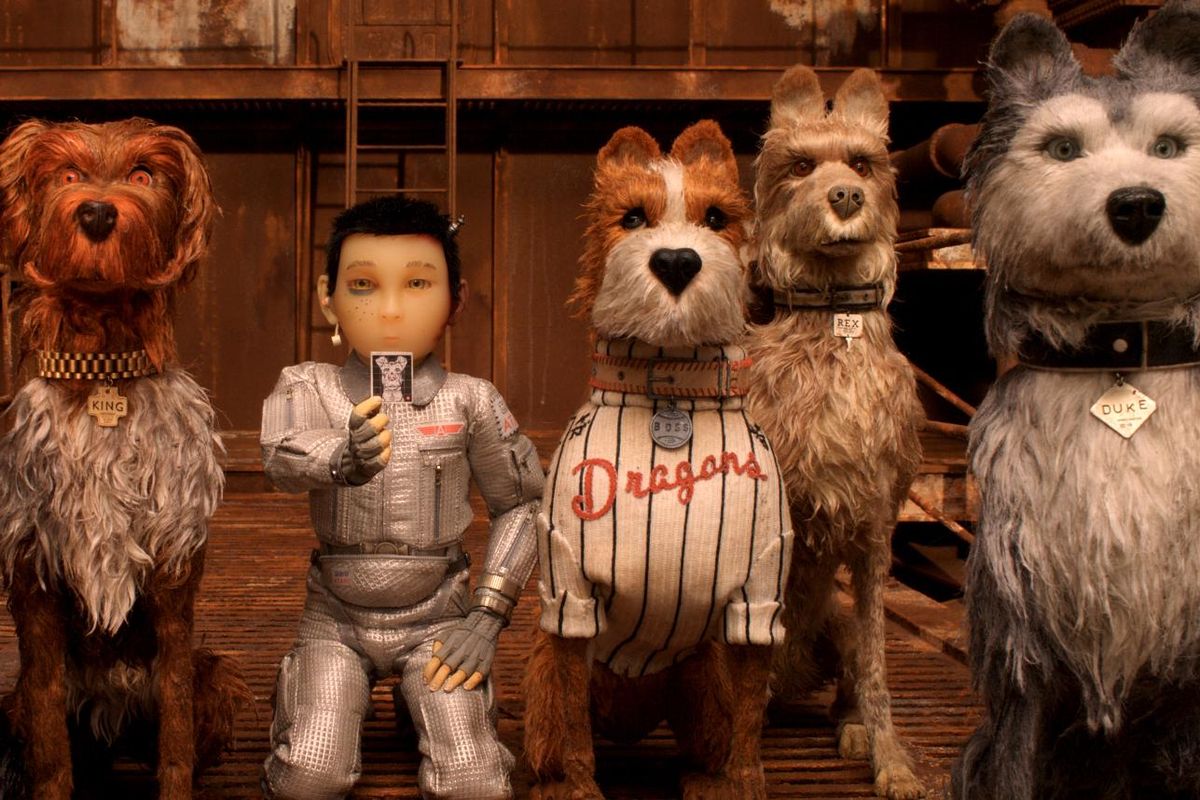Review: Wes Anderson has howling good success with ‘Isle of Dogs’

Oscar-nominated Wes Anderson has always shown what can happen when an unbridled mind meets a creative heart. Whether it be the unique examination of family in “The Royal Tenenbaums” to the redefining of animated storytelling with “Fantastic Mr. Fox,” Anderson has taken what in the hands of a lesser creative soul would be merely a passable story and made it memorable.
Until his latest work, “Isle of Dogs,” it looked like Anderson had found the most unorthodox and creative personification of his visions with “The Grand Budapest Hotel.” That whimsical and wonderful feature now pales in comparison to the genius Anderson shows with “Isle of Dogs.” He’s already set the bar so high for this year’s contenders for the feature film animation Oscar that the rest of the year will be filled with descriptions like “it’s a great animated movie, but nowhere near as phenomenal as ‘Isle of Dogs.’”
In a career already filled with unforgettable work, Anderson has found his animation masterpiece.
Describing the film does it no justice, because the only way to fully appreciate the production is to experience it all on multiple levels. At the heart is the story of 12-year-old Atari Kobayashi (voiced by Koyu Rankin), the ward of the massively corrupt Mayor Kobayashi (Kunichi Nomura). Taking advantage of an overpopulation of sick dogs, the mayor decrees that all the canine pets of Megasaki City are to be exiled to a vast garbage dump. The action seems to be in regards to public safety but is the end result of centuries of bad blood.
Atari flies to Trash Island in search of his bodyguard dog, Spots (Liev Schreiber), the first canine sent into the trash island exile. With the assistance of a pack of newly found mongrel friends, Atari begins a journey through the junkyard of failed adventures and misguided endeavors that will decide the fate and future of the entire Prefecture.
What keeps this from being just another boy and his dog tale are both the stunning visuals used to present the story and the beautifully written script that touches on issues both great and small. Along with directing “Isle of Dogs,” Anderson wrote the script with Roman Coppola, Jason Schwartzman and Kunichi Nomura.
Visually, Anderson blends a variety of styles ranging from pure simple cartoon to complicated Japanese paintings. The use of these styles can vary from scene to scene, and because of its variety, it’s as if every second is designed to surprise the eyes. He goes for a more kinetic style once on the island, but the action never stays there too long and quickly the film returns to the blend of styles and designs that should not go together but come through in great harmony.
Even the pack of dogs is an odd mix of punk design with the kind of look that made “Davey and Goliath” a hit. There are no more contrasting styles but they balance each other in this offering.
Equally impressive is the writing. Anderson never balks at having much of the dialogue be delivered in Japanese without translation for the audience. He does just enough with the English parts (including all the barks being translated) that there’s never any doubt what is going on with the players.
At its most simplistic, “Isle of Dogs” is the story of loyalty and friendship. But, this is a much more complicated tale where even the dogs represent various layers of society. They range from the leaders to those who are more content to stand on the sidelines and cheer. It is how these very different personalities find a unity that gives the production so much depth and meaning.
“Isle of Dogs” can be enjoyed as a simple story or as a complicated metaphor for life. Being able to pull off such diverse story elements coupled with the dazzling look of the film is a reminder that while we may think Anderson has shown us his best work, he continues to produce work that takes all elements of filmmaking to an even higher level.